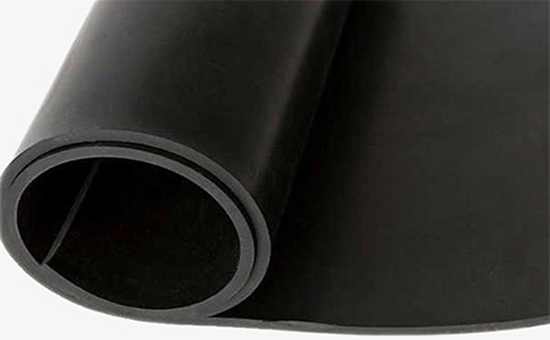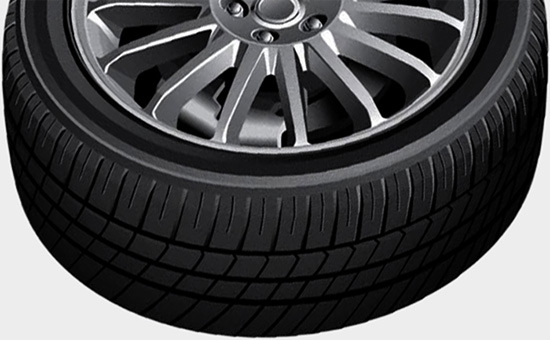In the production process of reclaimed rubber products, the moisture content is too high, which will lead to bubbles in the finished rubber products, which will affect the product quality and appearance and yield rate, especially the addition of some liquid compounding agents such as pine tar, coumarone, etc. Therefore, it is necessary to strictly control the moisture content in the production process of recycled rubber products, avoid the problems of uneven dispersion during reclaimed rubber mixing and bubbles during vulcanization, improve the yield rate, and avoid unnecessary economic losses.
1. Rubber pretreatment: Dry the original rubber and reclaimed rubber before the production of rubber products to remove excess water. A dryer or oven is often used to ensure that the moisture content in the rubber is kept to a minimum. After the raw rubber is soft in the oven at 60-70 °C, the rubber is cut and broken into small pieces; Reduces the moisture content in the raw rubber and avoids bubbles during subsequent processing.
2. Rubber compounding agent treatment: liquid compounding agents such as pine tar, coumaron, etc., need to be heated, melted, evaporated water, filtered impurities, and dried; Bulk compounding agents such as paraffin, stearic acid, rosin, etc. should be crushed, and powdered E4LYY226compounding agents need to be screened and removed if they contain mechanical impurities or coarse particles; Powdered compounding agent screening to remove mechanical impurities or coarse particles, reducing possible sources of moisture; Ensure that the compounding agent can be evenly dispersed during the mixing process, reducing problems caused by moisture.

3. Appropriate use of hygroscopic agents: Appropriate use of calcium oxide and other hygroscopic agents to absorb the water in the original rubber, reclaimed rubber and compounding agent, and reduce the risk of bubbles during vulcanization. Calcium oxide can also be used as a filler material to increase the volume of rubber products and improve physical and mechanical properties.
4. Reasonable design of the mold: The design of the mold is reasonable to ensure that the rubber can flow smoothly during the molding process and reduce the water retention caused by uneven pressure.
5. Plastic refining process: Proper plastic refining of reclaimed rubber can further improve the plasticity, permeability and molding fluidity of the rubber compound, make it easier for the compounding agent to be evenly dispersed, and help to remove moisture in the rubber compound.
6. Mixing process: control the mixing process parameters of reclaimed rubber, such as temperature, pressure, time, etc., to ensure that the reclaimed rubber is fully mixed with the compounding agent, and the mechanical mixing effect of the mixer should make the compounding agent completely and uniformly dispersed in the reclaimed rubber to avoid excessive local moisture. Monitor production parameters during the compounding process to ensure consistent and consistent product quality.
7. Vulcanization process: During the vulcanization process of reclaimed rubber products, parameters such as temperature, time and pressure are strictly controlled to ensure that the rubber can be fully vulcanized or cured to obtain the required strength and durability, while removing excess water.
8. Molding process: During the molding process of reclaimed rubber products, the temperature and pressure of the mold are controlled to ensure that the rubber can flow smoothly and fill the mold, reducing the bubbles caused by moisture.

9. Environmental control: Keep the production environment dry and ventilated, and avoid the rubber material absorbing moisture due to excessive ambient humidity.
10. Intermediate inspection: Intermediate inspection is carried out at various stages of the production process, such as the Mooney viscosity test of rubber compounds, to monitor whether the moisture content is within the control range.
11. Post-treatment: The vulcanized rubber products should be properly post-treated, such as trimming, cleaning, etc., to remove possible residual moisture.
It is of great significance to control the moisture content in the production process of reclaimed rubber products to improve the quality and performance of products. In addition, some rubber compounding agents will also produce water, such as water as a by-product of the reaction among zinc oxide and stearic acid, and we will continue to discuss related issues with you in the future.
Exclusive original article [commercial authorization] reprint, excerpt and excerpt in any form are prohibited without written authorization. Focus on Hongyun rubber: learn the process formula and raw material technology of producing rubber products from recycled rubber to help you reduce costs and increase profits